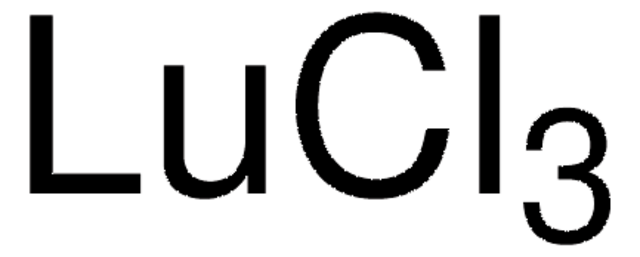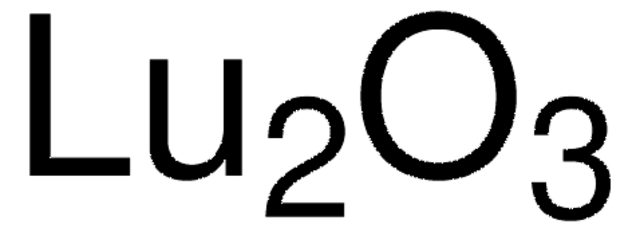GF58573648
Lutetium
powder, 1g, max. particle size 500 micron, 99.9%
Synonym(s):
Lutetium, LU006010
About This Item
Recommended Products
Assay
99.9%
form
powder
manufacturer/tradename
Goodfellow 585-736-48
resistivity
54 μΩ-cm, 20°C
particle size
500 μm
bp
3402 °C (lit.)
mp
1663 °C (lit.)
density
9.84 g/mL at 25 °C (lit.)
SMILES string
[Lu]
InChI
1S/Lu
InChI key
OHSVLFRHMCKCQY-UHFFFAOYSA-N
Looking for similar products? Visit Product Comparison Guide
Related Categories
General description
Legal Information
Signal Word
Danger
Hazard Statements
Precautionary Statements
Hazard Classifications
Flam. Sol. 1
Storage Class Code
4.1B - Flammable solid hazardous materials
WGK
WGK 3
Flash Point(F)
Not applicable
Flash Point(C)
Not applicable
Choose from one of the most recent versions:
Certificates of Analysis (COA)
Sorry, we don't have COAs for this product available online at this time.
If you need assistance, please contact Customer Support.
Already Own This Product?
Find documentation for the products that you have recently purchased in the Document Library.
Our team of scientists has experience in all areas of research including Life Science, Material Science, Chemical Synthesis, Chromatography, Analytical and many others.
Contact Technical Service








